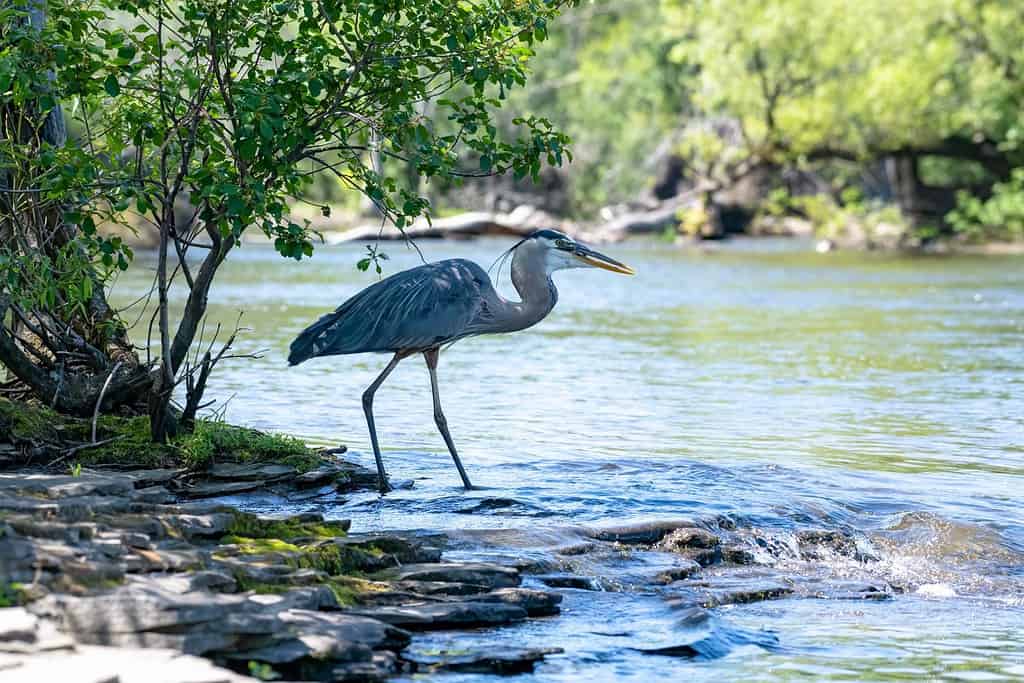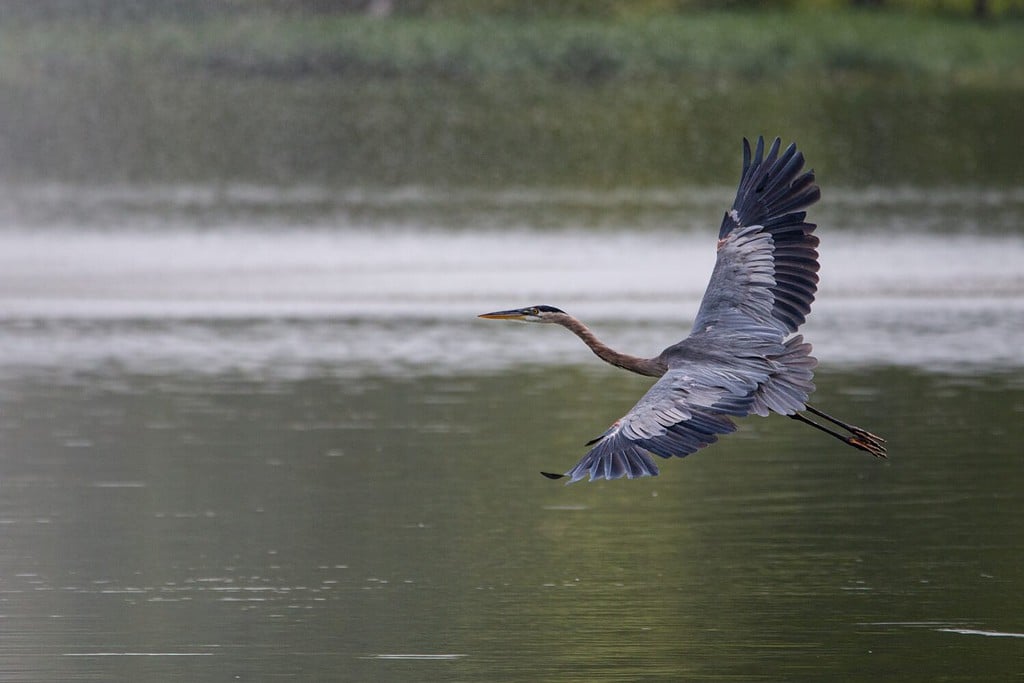
The post The Feather-Drying Dance of Great Blue Heron appeared first on A-Z Animals.
Birds that live in or near water spend much of their time diving below the surface to catch fish. But just like people stepping out of a swimming pool, these birds can’t stay soaking wet. But how exactly do they go about drying their wings and plumage after a dip? In this Instagram post by @debsandidge, a great blue heron is shaking its feathers back and forth. While it may seem like a courtship display at first, it is simply drying its feathers. Read here to learn more!

©Karen Hogan/Shutterstock.com
Feather Maintenance
In the post linked above, the great blue heron is stretching its wings back and forth and shaking its feathers out at the end. This dance-like movement is the heron’s way of drying its feathers after a swim. Because herons spend lots of time standing or swimming in water, they are experts at drying themselves. After a swim, the heron shakes its whole body like a dog to fling all the water off their feathers. Similar to the video above, they also fluff their feathers through frequent movements. Flicking their wings is another way they dry off quicker. All of this movement helps to settle the feathers back into place. This is all part of their feather maintenance and preening, which helps to ensure they stay healthy.

©Michael Munster/Shutterstock.com
What Are Heron Courtship Displays?
The blue heron’s feather drying method seen in the video resembles courtship displays observed in other birds. But if their little dance is solely for the purpose of drying their plumage, how do these birds attract mates? The great blue heron has several different courtship displays that it performs during the breeding season. The most common is through stretching their neck fully upwards. With their bill pointed to the sky, they can show off their prowess. They also impress by spreading their wings, making them appear larger than they are. Herons also clack their bills, adding an audible component to the performance. Other displays include bringing sticks or other objects to potential mates and mutual preening. These behaviors all occur near the nest rather than the water. One clear distinction between the water drying method and the courtship dance lies in the manner of movement. While drying requires quick shakes, courtship displays are slow and graceful.
The post The Feather-Drying Dance of Great Blue Heron appeared first on A-Z Animals.
November 23, 2025 at 06:32PMSonny Haugen
.jpeg)
.jpeg)

0 Comments